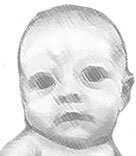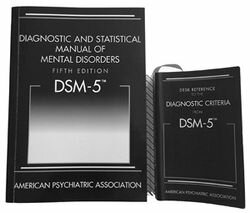Attachment styles and reactive attachment disorder

AttachmentThe communication of emotion between an infant and their primary caregiver(s) is essential to shaping the developing mind. "Emotion serves as a central organizing process within the brain. In this way, an individual's abilities to organize emotions - a product in part, of early attachment relationships directly shapes the ability of the mind to integrate experience and to adapt to future stressors." {{Rp|9}} Interruption in the attachment pattern of young children with their caretaker(s) has been shown to be a primary precursor to Dissociative Disorder pathology. (see etiology) {{Rp|85}} {{Rp|97}} describes disorders of mood"Pervasive and sustained emotion" which affects a person's perception of the world.{{Rp|6}}, behavior, and social relationships arising from a failure to form an ideal relationship with a primary caregiver in early childhood. The process is complex involving chemistry, neurology and perhaps dissociative boundaries or brainThe brain is a approximately a 1300-gram organ containing 100-billion neurons. It is the control center of the central nervous system. The mind and brain are not the same thing. (see mind) The mind emerges out of interactions between the brain and relationships during the earliest years of childhood. Different child-parent attachment relationships form differing physiological responses, patterns for interpersonal relationship and how an individual views the world. {{Rp|9}} (see attachment) damage. There are researchers that have devoted years of study to the behavior of child - caregiver interaction. One of the original studies is the Mary Ainsworth study, which used 12-month old infants and put them through set scenarios with their primary caregiver. The infant's that were said to have a secure attachmentThe communication of emotion between an infant and their primary caregiver(s) is essential to shaping the developing mind. "Emotion serves as a central organizing process within the brain. In this way, an individual's abilities to organize emotions - a product in part, of early attachment relationships directly shapes the ability of the mind to integrate experience and to adapt to future stressors." {{Rp|9}} Interruption in the attachment pattern of young children with their caretaker(s) has been shown to be a primary precursor to Dissociative Disorder pathology. (see etiology) {{Rp|85}} {{Rp|97}} were disturbed when their primary caregiver left the exam room, then were secure enough to explore their surroundings after the caregiver left them. Upon the primary caregivers return, they were joyful and acknowledged their caregiver and then continued to explore their environment. Attachment styles have been shown to remain fairly consistent throughout life. [1] [2]
The brain - mind confusion applies to attachment styles that are not secure. These are not a disorders, according to the DSM-5, but are disrupting and lead to other disorders such as posttraumatic stress disorder (PTSD), other specified dissociative disorder (OSDD), and dissociative identity disorder (DIDDissociative identity disorder is a disorder of mental states, where a individual switches from one distinct state to another distinct state, which distinguished it from OSDD/DDNOS, BPD and PTSD. {{Rp|557-570,487-494,471-486}} {{See also| Dissociative Identity Disorder}}). Understanding attachment styles is imperative for the comprehension of advanced disturbances. [1] [2]
Contents
Secure attachment
In almost all cases the primary caregiver has a secure attachment style, and they are able to mirror this to their infant. Even in cases where one parent does not have a secure attachment, the secure attachments seems to be passed on to the child no matter which caregiver is with the child most often. Of interest, the child is confused when the caregiver without the secure attachment is with them, but it does not stop them from developing the parts of their mind and brain that are necessary for them to exhibit the behavior patterns that other infants and children do that have obtained a secure attachment. [1] [2]
Avoidant attachment
Studies reveal the behavior of children grouped into this category to have a disturbed attachment with their primary caregivers, but findings show that rarely are these children abused in a literal sense of the word. The parent could be mentally ill, or there could be raising their child amidst disturbing environmental conditions that are affecting the perceived relationship between the child and its caregivers. The primary caregiver could have dissociative identity disorder, or even other specified dissociative disorder and the child literally does not know who their caregiver is moment to moment. They are confused. If a child is unable to seek out a safe person, then their mind cannot calm. A lack of calming results in brain - mind miscommunication, and although there are is more than one thought on this, the newest and brightest is that it is literally the neurons of the hippocampus that are affected and not the mind. Another excellent idea is that it is the mind that is affected. Ellert Nijenhuis (2014) believes that when an infant is unable to obtain a secure attachment with a primary caregiver then a dissociative boundaryA dissociative boundary separates dissociated states. {{See also | Amnesia}}, much like what is seen following structural dissociation, will persist. Whether it's the mind or the brain, or even both that are affected the result is an anxious person. Due to the confusion in their "head" they are triggeredA reactivating stimulus in trauma disorders. A stimulus in the present which is a reminder of a part of a traumatic [[memory]], which can cause the part of an individual that hold the trauma (EP) to feel as if it is reliving past trauma experience. {{Rp|166-186}} Also known as a trauma trigger. easily and respond with visually active responses such as nail biting, fidgeting, bouncing from one foot to the other when standing and so on. The individual is often, but not always, visually anxious. [1] [2]
Disorganized attachment
Children who researchers group into this category have been subjected to child abuse"interactions in which one person behaves in a violent, demeaning or invasive manner towards another person (e.g. child or partner)" according to most top researchers. Upon observation a child in this grouping is agitated when their primary caregiver is in an exam room with them. Their reactions are confused then the caregiver leaves the room, but are rarely distressed. Usually they show joy, wariness or mistrust. Once in a while a child shows no emotion and these children seem to be the most disturbed. While the caregiver is gone from the room, the child relaxes as much as they appear to be capable of, but still appear wary. Upon return of the caregiver the child is always distressed, but they never overtly show it. Instead the infants look confused; some infants will approach their caregiver, but then stop, turn around and even fall to the ground and don't appear to know what to do. Researchers believe this is because they desperately need an attachment figure, but their primary caregiver is a source of fear. These children are apprehensive in response to their caregivers, and their lack of trust is obvious to researchers. The same child does not exhibit the mistrust when a stranger wants to comfort them or even an adult they have come to know does. Their confusion is in response to their caregiver only. [1] [2]
Diagnostic manuals
Diagnostic manuals like the DSM and ICD are not meant to be used to understand any mental disorderThe DSM-5 psychiatric manual defines this as "a syndrome characterized by clinically significant disturbance in an individual's cognition, emotion regulation, or behavior that reflects a dysfunction in the psychological, biological, or developmental processes underlying mental functioning. Mental disorders are usually associated with significant distress or disability in social, occupational, or other important activities. An expected or culturally approved response to a common stressor or loss, such as the death of a loved one, is not a mental disorder. Socially deviant behavior (e.g., political, religious, or sexual) and conflicts that are primarily between the individual and society are not mental disorders unless the deviance or conflict results from a dysfunction in the individual, as described above."{{Rp|20}}. [3]:19 Their intent is to give the minimum criteria needed to diagnose a disorder. The criteria listed here is paraphrased.

The Diagnostic and Statistical Manual of Mental Disorders (DSMPublished by the American Psychiatric Association as the standard classification of mental disorders used by US mental health professionals. It consists of diagnostic classification, the diagnostic criteria sets, and descriptive text. The DSM-II listed multiple personality disorder as a symptom of hysterical neurosis, dissociative type. The DSM-III (1980) moved Multiple Personality Disorder from a symptom to its own disorder. The DSM-IV changed the name to dissociative identity disorder (1994) and the DSM-5 (May 2013) updated the listing to current standards. {{Rp|384}}-5), was released to the public May 27, 2013. [3]
References
- ^ a b c d e Leo, Giuseppe (2014) (coauthors: David Mann, Georg Northoff, Allan N Schore, Robert Stickgold, Bessel A Van Der Kolk, Grigoris Vaslamatzis, Matthew P Walker). Psychoanalysis and Neuroscience. 10: 8897479065.
- ^ a b c d e Siegel, Daniel (2012). . Guilford press. 13: 978-1462503902.
- ^ a b American Psychiatric Association, (2013). . APA..


